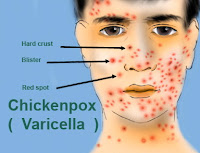Diabetes Mellitus
Diabetes mellitus is a group of metabolic diseases characterized by high blood sugar (glucose) levels, that result from defects in insulin secretion, or action, or both. Diabetes mellitus, commonly referred to as diabetes (as it will be in this article) was first identified as a disease associated with "sweet urine," and excessive muscle loss in the ancient world. Elevated levels of blood glucose (hyperglycemia) lead to spillage of glucose into the urine, hence the term sweet urine.
Normally, blood glucose levels are tightly controlled by insulin, a hormone produced by the pancreas. Insulin lowers the blood glucose level. When the blood glucose elevates (for example, after eating food), insulin is released from the pancreas to normalize the glucose level. In patients with diabetes, the absence or insufficient production of insulin causes hyperglycemia. Diabetes is a chronic medical condition, meaning that although it can be controlled, it lasts a lifetime.
www.medicinenet.com
12 Nursing Diagnosis for Diabetes Mellitus
1. Imbalanced Nutrition: Less/More than Body Requirements
2. Ineffective Tissue Perfusion: Renal, cardiopulmonary, peripheral
3. Impaired Urinary Elimination
4. Disturbed sensory perception: Visual, tactile
5. Activity Intolerance
6. Ineffective Coping
7. Sexual Dysfunction
8. Fear
9. Deficient Knowledge
10. Risk for Impaired Skin Integrity
11. Risk for Injury
12. Risk for Infection
Nursing Care Plan for Diabetes Mellitus
Diabetes mellitus is a group of metabolic diseases characterized by high blood sugar (glucose) levels, that result from defects in insulin secretion, or action, or both. Diabetes mellitus, commonly referred to as diabetes (as it will be in this article) was first identified as a disease associated with "sweet urine," and excessive muscle loss in the ancient world. Elevated levels of blood glucose (hyperglycemia) lead to spillage of glucose into the urine, hence the term sweet urine.
Normally, blood glucose levels are tightly controlled by insulin, a hormone produced by the pancreas. Insulin lowers the blood glucose level. When the blood glucose elevates (for example, after eating food), insulin is released from the pancreas to normalize the glucose level. In patients with diabetes, the absence or insufficient production of insulin causes hyperglycemia. Diabetes is a chronic medical condition, meaning that although it can be controlled, it lasts a lifetime.
www.medicinenet.com
12 Nursing Diagnosis for Diabetes Mellitus
1. Imbalanced Nutrition: Less/More than Body Requirements
2. Ineffective Tissue Perfusion: Renal, cardiopulmonary, peripheral
3. Impaired Urinary Elimination
4. Disturbed sensory perception: Visual, tactile
5. Activity Intolerance
6. Ineffective Coping
7. Sexual Dysfunction
8. Fear
9. Deficient Knowledge
10. Risk for Impaired Skin Integrity
11. Risk for Injury
12. Risk for Infection
Nursing Care Plan for Diabetes Mellitus
































